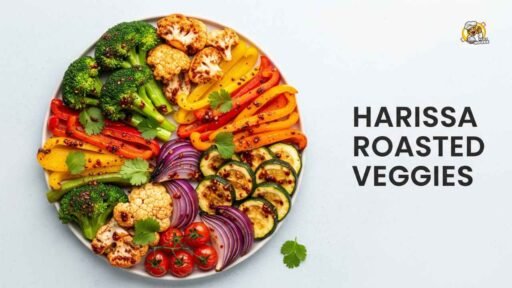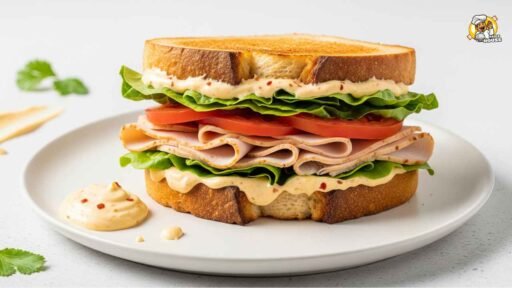Only about 1 in 10 U.S. adults meet daily vegetable intake recommendations, a stubborn gap that has barely budged despite years of campaigns, new product launches, and menu “better-for-you” claims, according to CDC analyses of 2019 BRFSS data and related summaries.
Here’s the thing: at the same time, harissa, a North African chili paste blending peppers, garlic, oil, and warm spices has been quietly moving from niche shelves to mainstream sauces, seasonings, and fast-casual menus, with suppliers like McCormick tracking sharp growth in product introductions and menu mentions that “sources say” signal a broader comeback for bold, pepper-forward flavors in home kitchens and grocery carts.
Consumers struggling with “choosy” or picky eating, retailers chasing flavor-led basket lifts, and investors watching global condiments as a margin-friendly category all have skin in this game, especially if a spicy staple can make weeknight vegetables more craveable without a lot of culinary gymnastics. This smells like a simple, scalable fix: teach a go-to, step-by-step harissa-roasted veggie method that delivers repeatable wins and lowers the barrier to trying more plants, even for selective eaters who recoil at bitter notes or inconsistent textures.
The Data
-
Only 10.0% of U.S. adults meet vegetable intake recommendations and 12.3% meet fruit targets, with sizable gaps by region, income, and age, per CDC’s assessment of 2019 BRFSS data published in MMWR and related briefings.
-
Picky eating affects a large share of families: a longitudinal study found 13%–22% point prevalence at any age from 2–11, with about 40% lasting more than two years, a persistence that can clog family routines and shrink variety unless habits shift early and gently.
-
Harissa’s footprint is expanding: McCormick’s flavor insights note significant year-over-year growth in harissa mentions and products, with fast-casual menus adding harissa items and sandwiches making up roughly 34% of harissa-flavored menu entries tracked, while product launches skew toward sauces and seasonings, per aggregated Mintel data.
Quick Harissa Roasted Veggies
Toss 4–6 cups mixed vegetables (1-inch pieces) with 1–2 tablespoons oil, 2–3 tablespoons harissa paste, salt, and lemon, then roast at 425°F until tender and browned, 20–40 minutes depending on veg density, stirring once midway for even color and crisp edges.
Harissa Roasted Veggies: Flavor-Boost for Picky Eaters (Step-By-Step Guides)

Harissa carries a balanced punch of heat, garlic, smoke, warm spices, and lemon that masks bitter vegetal notes while adding aroma and color, two levers that help selective eaters accept new preparations with less pressure and more curiosity. Structured, low-key exposure matters: AAP’s HealthyChildren.org puts it plainly, “A low-key approach to choosy eating can help kids come around and try a wider variety of foods,” which pairs well with a single, repeatable seasoning paste like harissa that keeps variables stable week to week.
On menus and shelves, the category is normalizing fast, with suppliers positioning harissa in sauces, seasonings, and snacks, signaling to home cooks that “spicy but friendly” is in bounds for everyday meals, not just special-occasion spreads.
Ingredients and tools
-
Vegetables: Mix softer picks (broccoli, cauliflower, zucchini, bell pepper) with denser roots (carrots, potatoes, sweet potatoes) for contrast in texture and sweetness, cut to uniform 1-inch pieces to ensure even cooking.
-
Harissa marinade: 2–3 tablespoons harissa paste, 2 tablespoons olive oil, 1 tablespoon lemon juice, 1 teaspoon honey (optional), 1 teaspoon kosher salt; this ratio coats 4–6 cups of vegetables generously.
-
Sheet pan and space: Use a large, rimmed baking sheet so vegetables don’t steam; crowding blocks browning and leads to soggy edges instead of crisp, sweet caramelization.
Time and Temperature
Roast at 425°F for crisp-tender results with good browning; firmer vegetables run 25–45 minutes while softer ones finish in 15–25 minutes, so staggering or cutting denser veg smaller helps synchronize doneness on one pan. Stir once at the halfway point to redistribute surface moisture and caramelization, which promotes even coloring and prevents hot spots from scorching delicate florets. If in doubt, pull a piece and taste at the earliest time range—over-roasting drives off moisture and concentrates bitterness, which can turn selective eaters off fast.
Step-by-step method
-
Preheat to 425°F and line a rimmed sheet with parchment for easy cleanup and better release, noting some parchment brands cap at 425°F—check the box to avoid scorching.
-
Cut vegetables into even 1-inch chunks; keep softer veg slightly larger or add them later to avoid mush, while slicing dense roots smaller to speed cooking.
-
Whisk harissa, oil, lemon, salt, and honey (optional) until glossy; the small sugar boost rounds chili heat and helps browning without tipping to sweet.
-
Toss vegetables thoroughly to coat every surface; spread in a single layer with space between pieces to maximize dry heat contact.
-
Roast 15 minutes, stir, then continue 10–25 minutes until edges brown and centers are tender; finish with a squeeze of lemon or a spoon of yogurt to cool the heat for tentative eaters.
Flavor Levers For Choosy Eaters
Start mild by cutting harissa with extra olive oil or yogurt, then dial up as acceptance grows; this simple “ladder” preserves the same flavor profile while adjusting intensity week by week. Lean on sweetness and crunch: carrots, sweet potatoes, and bell peppers caramelize readily, which counters bitterness and boosts acceptance among tasters who prefer predictably sweet, crisp textures. Keep the routine stable—same pan, same timing, same serving ritual—so the only novelty is the vegetable itself, a gentle-exposure habit consistent with AAP guidance to model and repeat without pressure.
Menu and Meal-Prep Ideas
-
Grain bowls: Pile harissa veg over quinoa with chickpeas and a dollop of lemony yogurt; it’s protein-friendly and easy to portion for lunches.
-
Sheet-pan dinner: Add quick-cooking protein like shrimp or thin-cut chicken in the last 10–12 minutes for a one-pan, fifteen-minute finish, keeping seasoning consistent to avoid “two dinners”.
-
Sandwiches and wraps: The fast-casual trend skews toward harissa sandwiches; translate that at home with toasted pitas, pickled onions, and leafy greens for crunch.
Troubleshooting Texture
If vegetables steam and stay pale, the pan is crowded or the oven isn’t truly at temp; spread the veg out or split across two pans and confirm the preheat is complete before loading. For deeper browning, dry cut vegetables in the fridge, uncovered, to reduce surface moisture—a Serious Eats-endorsed trick echoed by pro testers and adapted by Food52 contributors. If edges char before centers turn tender, drop to 400°F or cut dense pieces smaller so heat can reach the core before the surface overcooks.
Five variations to keep it fresh
-
Rose harissa + honey: Softer heat with floral notes and a light drizzle of honey for glazed carrots and sweet potatoes.
-
Harissa + tahini: Swirl tahini and lemon into yogurt for a cooling sauce that soothes heat-sensitive palates.
-
Harissa + feta: Crumble salty feta over hot vegetables for a briny contrast that feels “restaurant” at home.
-
Harissa + citrus zest: Add orange or lemon zest before roasting to perfume the pan and round the chili’s edges.
-
Harissa + herbs: Finish with cilantro or parsley; fresh greens lift rich, roasted flavors and add color kids recognize.
Batching and leftovers
Roast double on two pans with racks staggered; rotate and swap halfway for even color and to keep air moving, then cool and store portions for easy add-ins all week. Leftovers reheat best in a hot skillet or air fryer to revive crisp edges, and they fold easily into scrambled eggs, couscous, or quesadillas for low-friction second acts. Keeping the seasoning profile consistent from dinner to lunch reduces friction for selective eaters who track subtle changes in flavor or texture more than adults do.
The People
“A low-key approach to choosy eating can help kids come around and try a wider variety of foods,” notes HealthyChildren.org, an American Academy of Pediatrics resource that emphasizes family modeling, routine meals, and pressure-free exposure over mealtime power struggles. Researchers who followed children from age 2 to 11 documented that picky eating is common 13% to 22% at any given age, with about 40% persisting more than two years, which suggests families benefit from repeatable, gentle tactics rather than quick-fix battles or separate menus that raise stress and shrink variety.
Here’s the rub: that persistence makes simple, stable routines like a weekly harissa sheet-pan night more than a recipe—they’re a behavioral nudge that lowers novelty and gives selective eaters a predictable on-ramp to new vegetables without a lecture.
The Fallout
If harissa keeps gaining share across sauces and seasonings, expect more CPG extensions and private-label riffs that make bold-but-balanced heat a pantry staple, which can widen the toolkit for busy households trying to increase vegetables without chasing specialty items each week, analysts say. In foodservice, harissa’s growing presence on fast-casual menus, especially sandwiches, conditions diners to see it as “everyday spicy,” which often boomerangs into home trial via retail jars and pastes as consumers try to recreate that craveable kick with weeknight produce.
The macro question for brands like McCormick is whether this flavor wave lifts vegetable consumption meaningfully, since only about one in ten adults meet targets today; even a small, sustained shift toward roasted vegetables at dinner could be a material, defensible win for both public health and pantry brands aligned to this habit loop.
Step-by-Step Guide
-
Prep and preheat: Heat oven to 425°F; line a large rimmed sheet with parchment; cut 4–6 cups mixed vegetables into 1-inch pieces for even cooking.
-
Mix marinade: Stir 2–3 tablespoons harissa paste with 2 tablespoons olive oil, 1 tablespoon lemon juice, 1 teaspoon honey (optional), and 1 teaspoon kosher salt until glossy.
-
Toss and space: Coat vegetables thoroughly and spread in a single layer with space between pieces to prevent steaming.
-
Roast and rotate: Roast 15 minutes, stir, then 10–25 minutes more until browned edges form and centers are tender; add lemon or yogurt at the end to moderate the heat for tentative tasters.
-
Serve and store: Finish with chopped cilantro or parsley; store leftovers for bowls, wraps, or quick breakfasts to reinforce exposure without extra work.
Nutrition and Acceptance Notes
Roasting at higher heat caramelizes surface sugars and builds fragrant browning, which counters the bitterness that often triggers rejection in selective eaters and helps vegetables “read” as indulgent rather than obligatory. Consistent exposure in a calm setting beats pressure; even seeing or touching a new vegetable counts toward acceptance, so keep the routine and seasoning steady while rotating one new veg at a time. Over time, the simple cadence—same pan, same spice, new shape—compounds into a real increase in variety without a big family fight, which aligns with evidence that picky eating can persist unless patterns shift gently and persistently.
Market Context For Harissa
McCormick’s flavor intelligence highlights harissa’s momentum across retail and restaurants, including product domains like sauces and seasonings that sit closest to the weeknight dinner use-case consumers face most. Mintel-linked tracking shows harissa product launches skew to sauces and seasonings, plus savory spreads and snacks, expanding aisle visibility in ways that normalize repeat purchase and experimentation with produce at home. Uber Eats signals a “comeback” in consumer orders for harissa, reinforcing the notion that the flavor is moving into mainstream rotation rather than staying a chef’s pet trend, which tends to pull retail stocking and private label along with it.
Who Benefits and How?
-
Consumers: A stable, tried-and-true harissa pan-roast reduces friction, adds flavor, and makes vegetables easier to accept, especially when intensity can be dialed up or down without changing the basic routine.
-
Retailers: More jars and pastes in carts attach to the produce trip, while sheet-pan recipes are a natural fit for cross-merchandised displays of seasonal veg, yogurt, and grains.
-
Brands/Investors: If harissa helps close even a sliver of the vegetable-intake gap, pantry staples aligned to that habit see durable, low-innovation growth that defends margins in a crowded category.
Recipe Card: Harissa Roasted Veggies
-
Serves: 4 as a side, 2 as a main, 30–40 minutes.
-
Ingredients: 4–6 cups mixed veg (1-inch pieces), 2–3 tablespoons harissa paste, 2 tablespoons olive oil, 1 tablespoon lemon juice, 1 teaspoon honey (optional), 1 teaspoon kosher salt, herbs to finish.
-
Directions: Preheat 425°F; toss veg with marinade; spread on sheet; roast 15 minutes, stir, then 10–25 minutes more until browned and tender; finish with lemon and herbs; serve with yogurt if desired.
-
Tips: Don’t crowd the pan; keep the seasoning profile constant while rotating a single new veg weekly to build acceptance without battles; check parchment max temp.
The People, Revisited
Families juggling real-world schedules need fewer moving parts, not more, which is why a single-flavor backbone like harissa can be a behavioral anchor—and the AAP-backed low-pressure approach fits this method like a glove. Longitudinal evidence suggests pickiness persists without consistent, calm exposure, and a weekly harissa sheet-pan dinner gives that exposure a practical, tasty shape that’s easy to repeat across seasons and produce bins. When the default is delicious, the argument fades, and that’s the quiet victory this approach aims to deliver week after week.
The Fallout, Revisited
Analysts now predict condiments and spice pastes that solve “home-cook flavor gaps” will keep inching share, because they add a lot of taste with very little time, and harissa sits squarely in that use-case for vegetables, grains, and proteins. If households adopt a “one-pan, one-paste” ritual for plants, don’t be surprised to see a halo on produce sales and pantry restocking, a small but steady force against the entrenched 1-in-10 vegetable intake problem. For brands, the risk is over-extension or gimmicks; the opportunity is clear labeling, reliable heat levels, and multipack or squeeze formats that make harissa weeknight-friendly without chef-speak.
Closing Thought
If a jar of harissa can turn picky-plate standoffs into a weekly “yes” on vegetables, will retailers and brands double down on simple, repeatable formats or will flavor creep and premium positioning price out the very households that could use this most?






